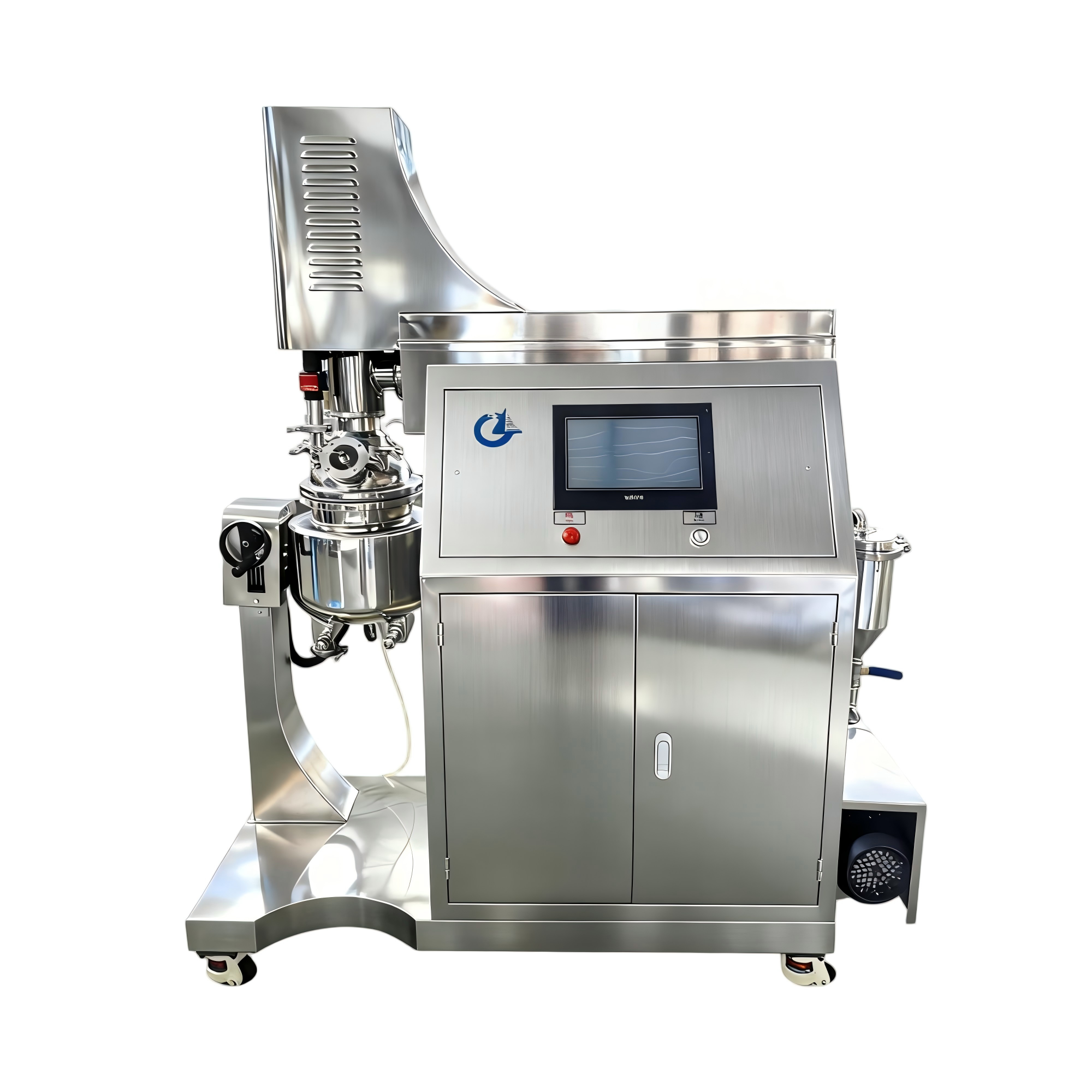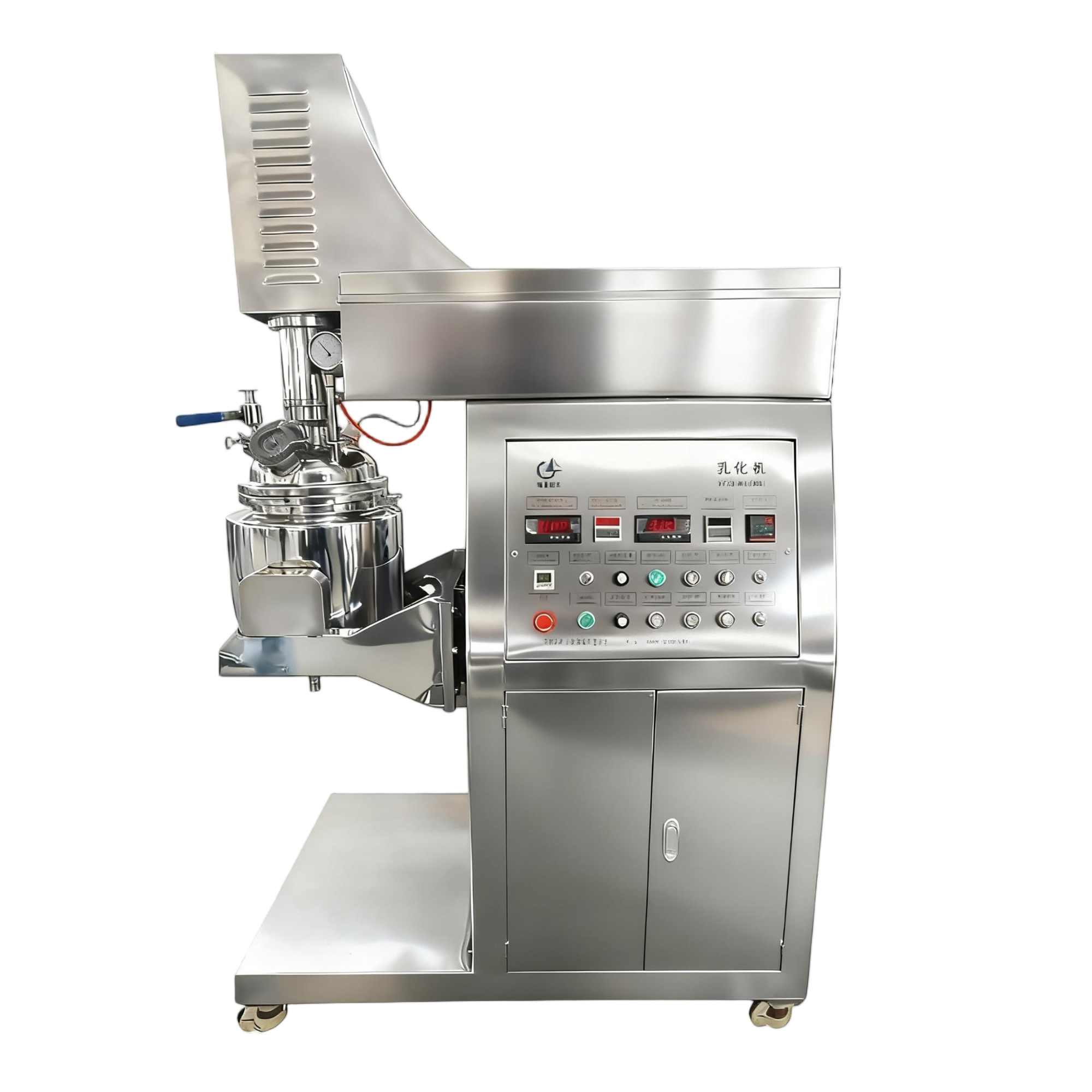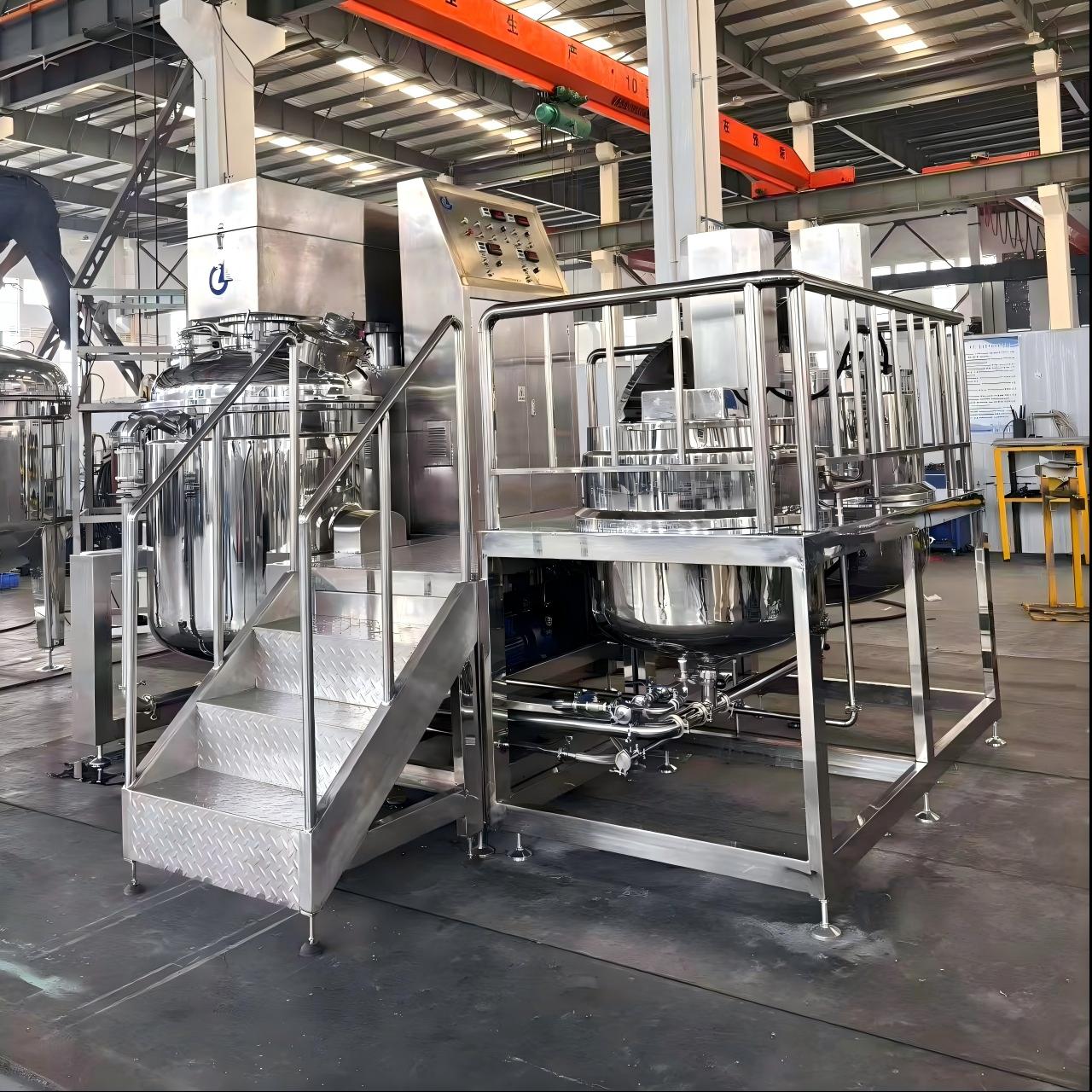Is the rotational speed of a laboratory emulsifier the higher the better?
The answer is no. When the rotational speed reaches an excessively high value, it tends to impede fluid movement. The flow rate becomes extremely low while heat generation rises sharply, and some materials may even re-agglomerate, leading to unsatisfactory results.
Laboratory emulsifiers play a crucial role in the mixing systems of industrial equipment. They are particularly indispensable for solid-liquid mixing, liquid-liquid mixing, oil-water emulsification, dispersion homogenization, and shear grinding. They are called "emulsifiers" because they can achieve emulsification—thoroughly blending oil and water phases to form emulsions, which are categorized into water-in-oil (W/O) or oil-in-water (O/W) systems. Two key requirements must be met for effective emulsification: first, intense mechanical shear and dispersion to simultaneously break down both aqueous and oil phases into small droplets. When these droplets recombine, they interpenetrate and mix to form an emulsion. Second, a suitable emulsifier is needed to act as a bridging medium between oil and water molecules. Through electrostatic charges and intermolecular forces, the emulsifier enables the oil-water mixture to remain stable for the desired period.

Today, the application of emulsifiers extends beyond mere "emulsification." Thanks to their unique shearing action, they can break down and impact solid particles in liquids, refining them to the desired particle size. This allows solids to fully mix into liquids and form relatively stable suspensions. Similar to emulsifiers, adding dispersants enhances the stability of these suspensions. If a solid substance can be completely dissolved in a liquid through prolonged contact, the small particles formed by shear and impact will dissolve much faster—their specific surface area is increased exponentially.
People have grown accustomed to using high-pressure homogenizers to obtain fine particles, leading to the association between refinement and homogenization. Thus, the process of particle refinement and thorough mixing achieved by emulsifiers is essentially a homogenization process. For this reason, emulsifiers are also referred to as homogenizers. To distinguish different types, they are often labeled with modifiers such as "high-speed" or "high-shear," resulting in various names: vacuum homogenizers, high-shear homogenizers, sterile homogenizers, in-line homogenizers, and more.
People have grown accustomed to using high-pressure homogenizers to obtain fine particles, leading to the association between refinement and homogenization. Thus, the process of particle refinement and thorough mixing achieved by emulsifiers is essentially a homogenization process. For this reason, emulsifiers are also referred to as homogenizers. To distinguish different types, they are often labeled with modifiers such as "high-speed" or "high-shear," resulting in various names: vacuum homogenizers, high-shear homogenizers, sterile homogenizers, in-line homogenizers, and more.
The intensity of an emulsifier’s shearing action directly affects the final particle fineness. Analysis shows this intensity is primarily related to the sharpness and hardness of the blades, the gap between the rotor and stator, the relative movement speed of the two shearing surfaces, and the maximum allowable particle size passing through. In most cases, the blade sharpness, hardness, rotor-stator gap, and allowable particle size are either fixed or not intended to be modified. Therefore, the relative movement speed of the emulsifier’s blades—expressed as the rotor’s circumferential linear speed—becomes the most influential factor. A higher linear speed increases the density of cuts or impacts on the radially flowing fluid, resulting in stronger refinement. The opposite is also true.
However, this linear speed is not infinitely better. At extremely high values, it tends to hinder fluid flow, leading to very low flow rates and excessive heat generation. Some materials may even re-agglomerate, yielding suboptimal results. Additionally, laboratory experiments are characterized by small sample volumes. To accommodate these small quantities, the physical size of the emulsifier’s rotor and stator must be reduced, meaning a smaller diameter. To compensate for the negative impact of a smaller diameter on linear speed, the rotor’s angular velocity must be increased—hence the "high rotational speed" of laboratory equipment.
In summary, the rotational speed of a laboratory emulsifier must be determined based on practical conditions, considering the existing processing requirements and production economy. For emulsifiers with a power rating below 18.5KW, a 2-pole motor with 3000rpm is commonly used. For those between 22KW and 55KW, a 4-pole motor with 1500rpm is preferred. For emulsifiers exceeding 75KW, a 6-pole motor with 1000rpm is suitable.
News
- Latest News
- Solutions
- FAQ
Recommend Products
-
 5L Vacuum Emulsifying Homogenizer Mixer
5L Vacuum Emulsifying Homogenizer MixerThe 5L vacuum emulsifying mixer is a device designed for emulsifying and mixing various substances in a vacuum environment. This equipment is equipped with a mixing tank with a capacity of 5 liters and is widely applied in industries such as food, pharmaceuticals, cosmetics, and pesticides.
-
 5L PLC-Screen Vacuum Emulsifying Mixer
5L PLC-Screen Vacuum Emulsifying MixerThe 5L PLC-Screen Vacuum Emulsifying Mixer is a device designed for emulsifying and mixing various substances in a vacuum environment. This equipment is equipped with a mixing tank with a capacity of 5 liters and is widely applied in industries such as food, pharmaceuticals, cosmetics, and pesticides.
-
 10L Vacuum Emulsifying Homogenizer Mixer
10L Vacuum Emulsifying Homogenizer MixerThe 10L Vacuum Emulsifying Mixer is a device used for emulsifying and mixing various substances in a vacuum environment. It is commonly used in industries such as food, cosmetics, and pharmaceuticals.


 English
English Russian
Russian French
French Spanish
Spanish Portuguese
Portuguese Korean
Korean Japanese
Japanese Thai
Thai





